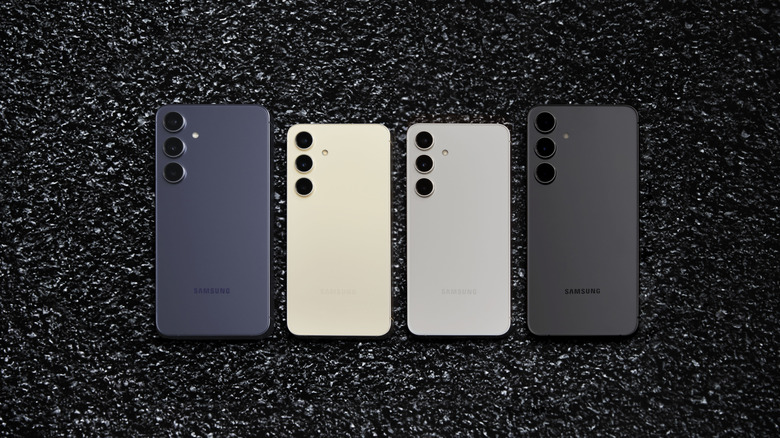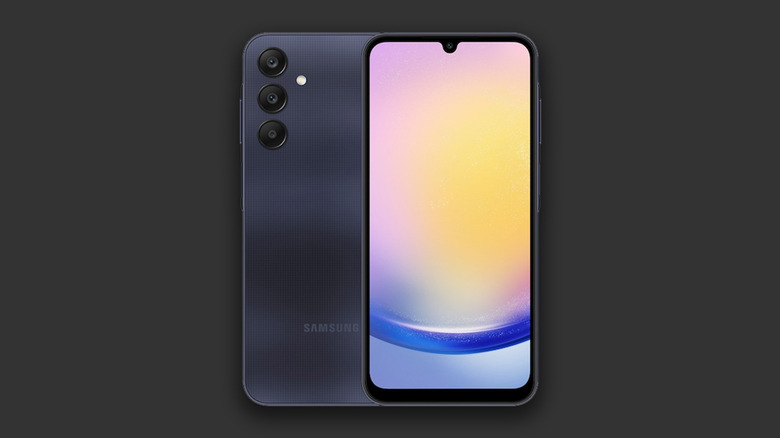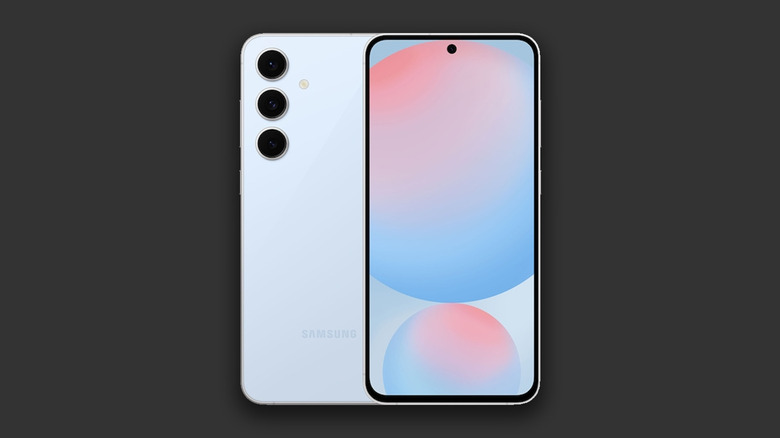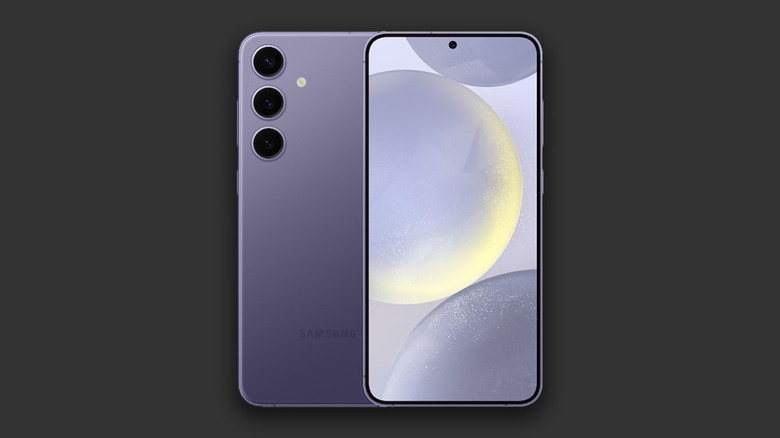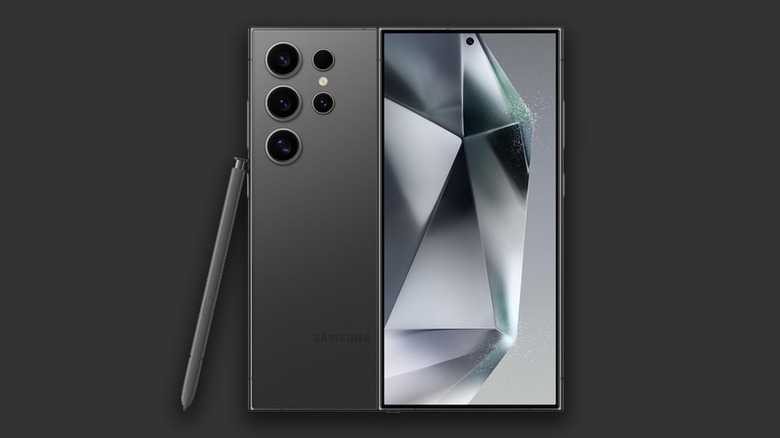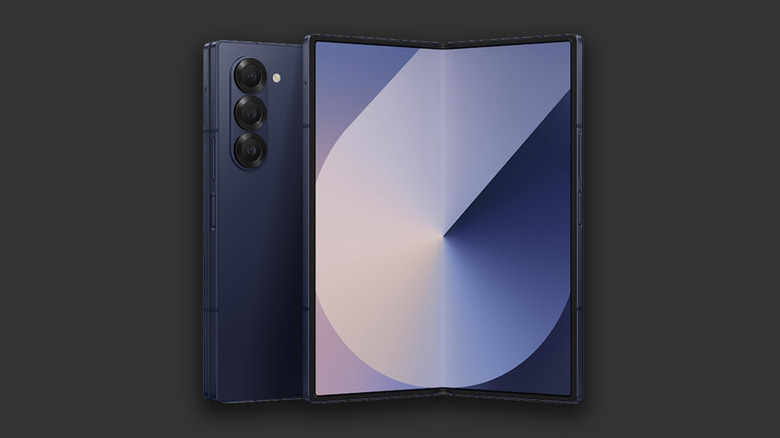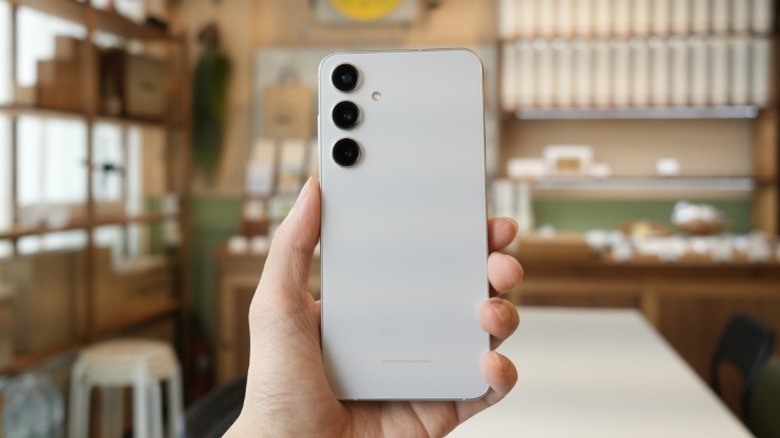5 Of The Best Samsung Phones For Every Budget (According To Reviews)
We may receive a commission on purchases made from links.
According to Counterpoint Research, Samsung is one of the largest smartphone vendors in the United States, second only to Apple. Samsung Galaxy phones are even more popular in parts of Asia and remain the default option for many. This is thanks to features that make Samsung phones hard to beat — things like build quality, an expansive ecosystem, and recently, solid software support.
We're all familiar with Samsung's top-end devices, like the Galaxy S23 Ultra that earned its spot as one of the best smartphones ever released. What some may not know is that the tech giant manufactures and sells phones at nearly every budget — from entry-level devices that are affordable to the masses, to flagships with cutting-edge hardware that cost over a grand. This wide catalog ensures that there is a Samsung phone for everyone.
Based on expert reviews, here are five of the best current-gen Samsung smartphones you can buy, at every price point. You can find out more about our methodology and how we've chosen phones for this list at the end of this read.
Galaxy A25: Budget-friendly option
At $299, the Samsung Galaxy A25 is one of the cheapest phones that the company makes, and is also one of the few smartphones you can buy that still has a headphone jack and expandable storage. Despite its affordable price tag, you get a 6.5-inch Super AMOLED display with a refresh rate of 120Hz — take notes, Apple. The resolution of the screen is a touch higher than FHD, which makes the Galaxy A25 a viable option for those who enjoy binging on Netflix.
The phone is powered by the Exynos 1280 SoC and packs in 6GB of RAM and 128GB of internal storage. CNET's review of the Galaxy A25 gave it a score of 7.5/10 and talks about how the phone struggles to keep up with demanding games or multitasking, but the 5,000 mAh battery should provide plenty of juice for most day-to-day tasks. The smartphone has a triple-camera setup at the rear which includes a 50-megapixel wide, 8-megapixel ultrawide, and another 2-megapixel macro sensor. Housed in the teardrop notch on the front is a 13-megapixel selfie camera.
Samsung also promises up to four years of OS updates with the Galaxy A25, which is really difficult to come by for a phone in this price segment. The Galaxy A25 isn't even Samsung's most affordable smartphone — that title would go to the Galaxy A15 that costs $199, but you do have to make noticeable sacrifices in performance, camera, and sound quality.
Galaxy S24 FE: Perfect middle ground
Positioned in the middle of Samsung's lineup of smartphones, the Galaxy S24 FE brings a good chunk of the premium experience down to a relatively affordable price of $649. This "Fan Edition" range of devices has always been a solid option for those who want to enjoy better camera quality, faster performance, and a classy build — without having to spend extra to upgrade to the regular Galaxy S24.
Specifications-wise, the Galaxy S24 FE makes use of Samsung's in-house Exynos 2400e SoC and comes with 8GB of RAM as standard. Storage starts at 128GB but can be doubled for an additional $60. The Galaxy S24 FE sports the same Dynamic AMOLED 2X display as its elder siblings, with a refresh rate of 120Hz and support for HDR10+. The phone uses Corning's Gorilla Glass Victus protection on the front and back, and has an aluminum frame going all around — which is a good departure from the predominantly plastic build of Samsung's cheaper phones.
This also means a more useful combination of camera sensors — wide, ultrawide, and telephoto. Tom's Guide gave the Galaxy S24 FE a 4/5 rating and tested aspects such as performance, cameras, and battery life in detail. In summary, you won't notice much difference in the day-to-day performance of using the S24 FE against the costlier Galaxy S24.
Galaxy S24 Plus: Plenty of screen real estate
In the middle of Samsung's flagship trifecta is the Galaxy S24 Plus. This smartphone is essentially an upsized version of the Galaxy S24, packing in more RAM, storage, and a bigger battery. If you do not care for the absolute best in class that is the Galaxy S24 Ultra, then the Plus variant will fend for most of your needs just fine. The device starts at $999 for 256GB of storage and comes in a good variety of colors.
The device is powered by the Snapdragon 8 Gen 3 SoC and comes with 12GB of RAM across all storage variants. It sports a 6.7-inch Dynamic LTPO AMOLED 2X display with HDR10+ and a refresh rate of 120Hz. In the camera department, the Galaxy S24 Plus features a 50-megapixel wide, 12-megapixel ultrawide, and a 10-megapixel telephoto lens capable of 3x optical zoom. The Galaxy S24 Plus packs in a 4,900 mAh battery, and according to TechRadar's review where the phone scored 4.5/5 stars, this is enough power to last a day with ease.
If you don't like big smartphones, then the relatively smaller 6.2-inch screen of the Galaxy S24 makes it one of the best few compact flagships in circulation. It's worth noting other differences between the Galaxy S24 and S24 Plus, like more RAM and a higher max storage tier. The larger screen also comes in at a higher QHD+ resolution, compared to the FHD+ panel of its cheaper sibling.
Galaxy S24 Ultra: Best of Samsung
At the very top of Samsung's slab-style smartphones is the Galaxy S24 Ultra — a phone that has secured a name for itself as the pinnacle of smartphone hardware. It packs in the best that Samsung has to offer, and is in direct rivalry with the iPhone 16 Pro Max. All this praise also comes with a hefty price of $1,299 which gets you 256GB of internal storage and a color-matched S Pen.
It comes with an even larger 6.8-inch AMOLED 2X 120Hz display capable of hitting a peak brightness of 2,600 nits. The panel can drop its refresh rate down to 1Hz, thanks to LTPO technology, which can help preserve battery — which is another aspect the phone is known best for. The 5,000 mAh battery can be fast charged up to 45W, or up to 15W with a wireless charger. If you own a Qi-compatible accessory like a pair of earphones, you can use the Galaxy S24 Ultra's reverse wireless charging to top them up on the go.
In our review of the Galaxy S24 Ultra, we gave the smartphone a rating of 9/10, highlighting its performance, battery life, build quality, and display. Even the camera system that has remained largely unchanged from the previous generation is solid. The quad-sensor setup includes a ridiculous 200-megapixel primary lens, a 12-megapixel ultrawide camera, and not one, but two telephoto lenses. The phone can record video up to 8K 30fps, or a more reasonable 4K 120fps.
Galaxy Z Fold 6: Premium foldable
From concerns surrounding durability to the difficulty of repairs, there are reasons to not buy a foldable smartphone. Yet, players in the industry have been hard at work with iterative designs and better software tweaks to help grow the appeal of folding smartphones to a wider audience. Inarguably one of the most popular options out there is the Samsung Galaxy Z Fold 6, and with a price tag of $1,899, it is the most expensive phone that Samsung sells.
The cover display of the Galaxy Z Fold 6 is a 6.3-inch AMOLED 120Hz panel. When unfolded, the display size increases to 7.6-inches, with support for HDR10+. Both screens feature dynamic LTPO technology and hit a peak brightness of 2,600 nits. Under the hood, you get a Snapdragon 8 Gen 3 chipset, with 12GB of RAM to handle multitasking. The foldable has a triple-camera setup with wide, ultrawide, and telephoto sensors.
With a score of 9/10 in our review of the Galaxy Z Fold 6, we were most impressed by its displays, build quality, and cameras — which is usually where most premium foldable smartphones miss the mark. The device was marketed with Galaxy AI features, which can come in handy in some scenarios. Really, the only con of the Z Fold 6 is its exorbitant price, which creeps up even higher if you want to bundle in an S Pen with your purchase.
How we picked these smartphones
We've based the picks on this list on reviews by experts in the industry. Sources like TechRadar, CNET, and Tom's Guide conduct in-depth testing of devices and are trustworthy sources when shopping for consumer electronics. We review many devices each year here at SlashGear as well, and take into consideration aspects like performance, battery, cameras, software, and the overall economic value of smartphones.
